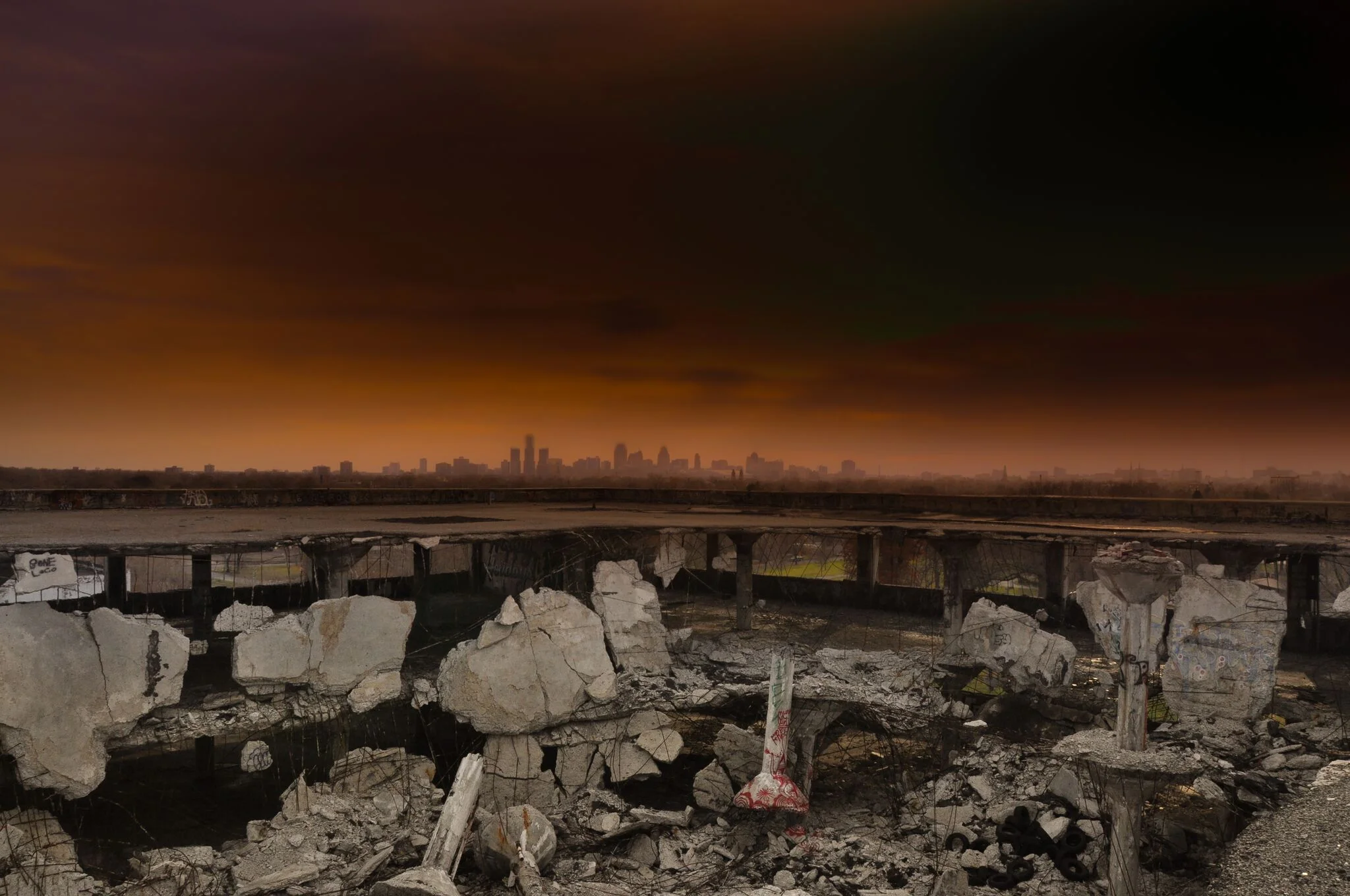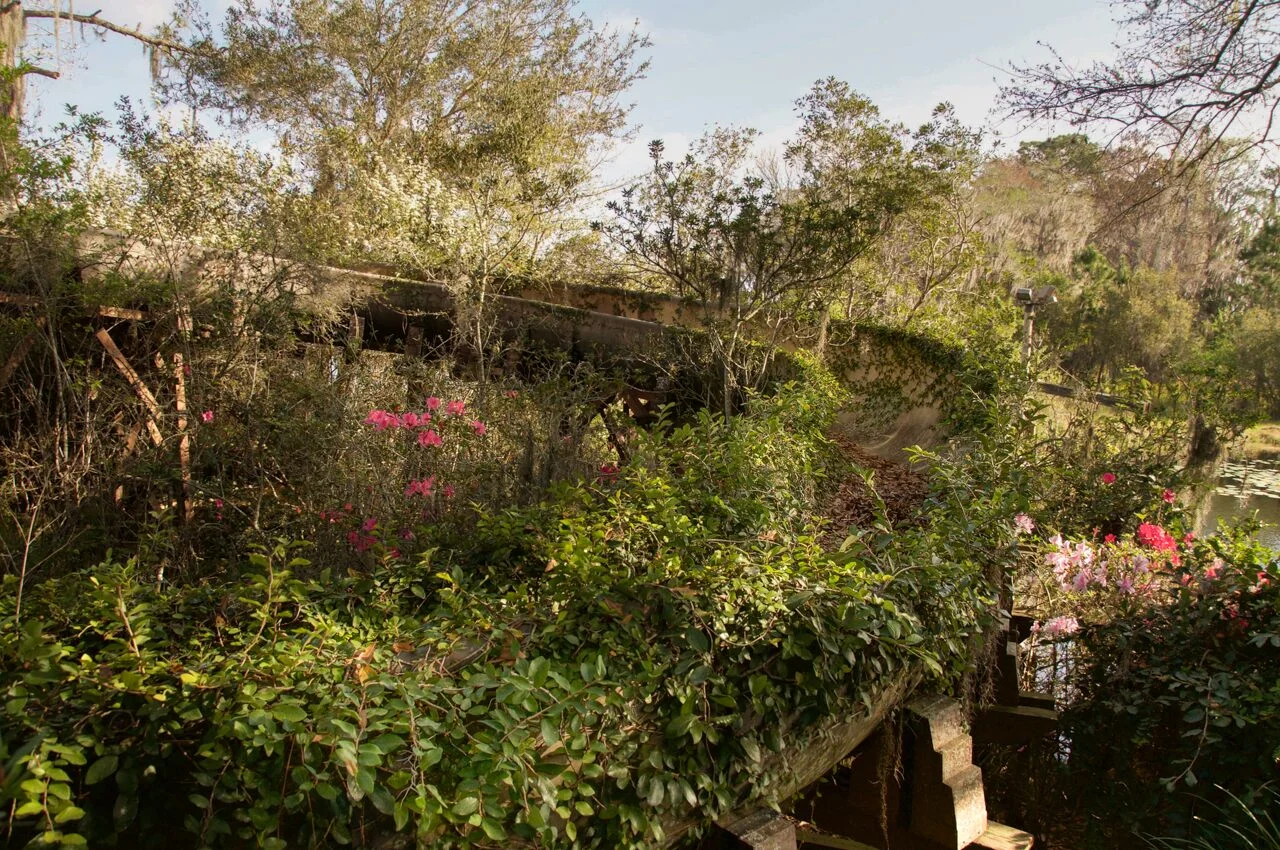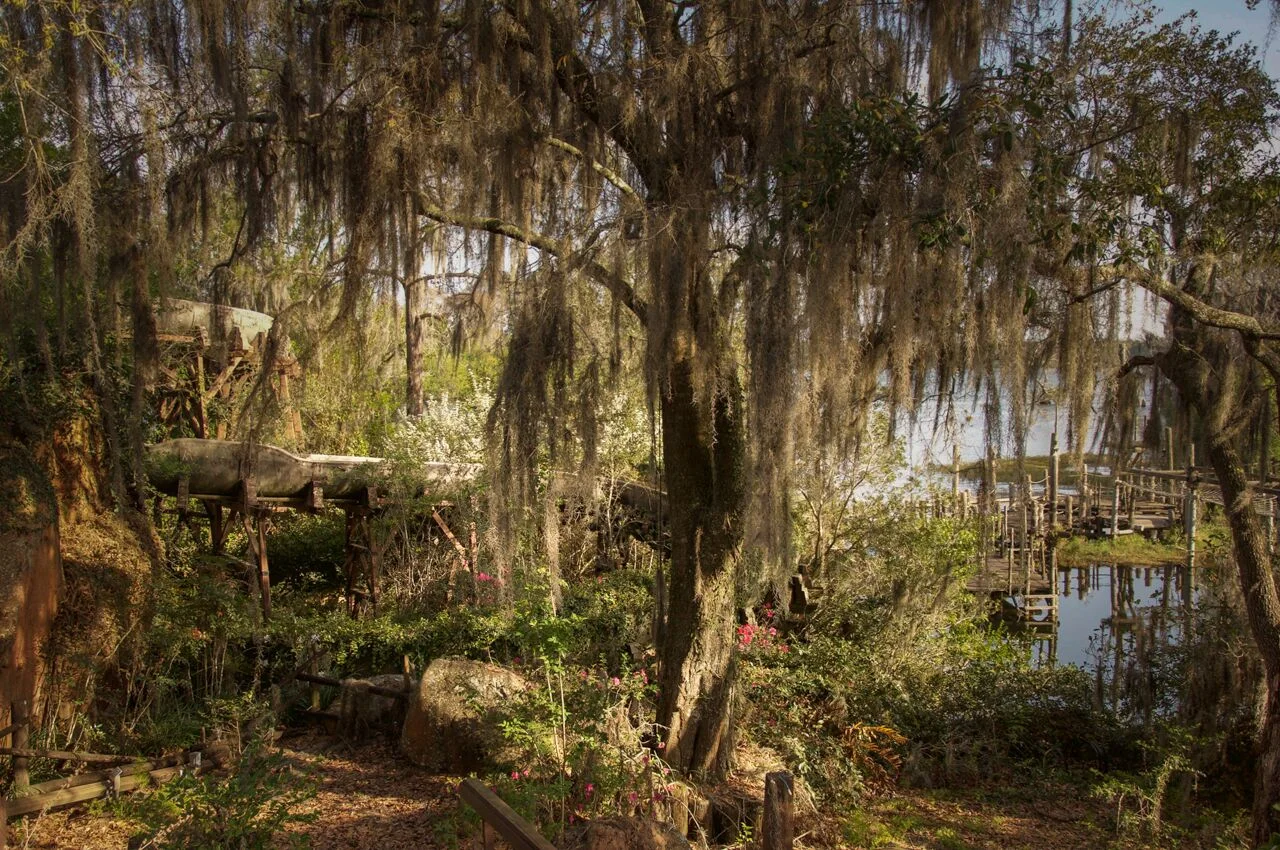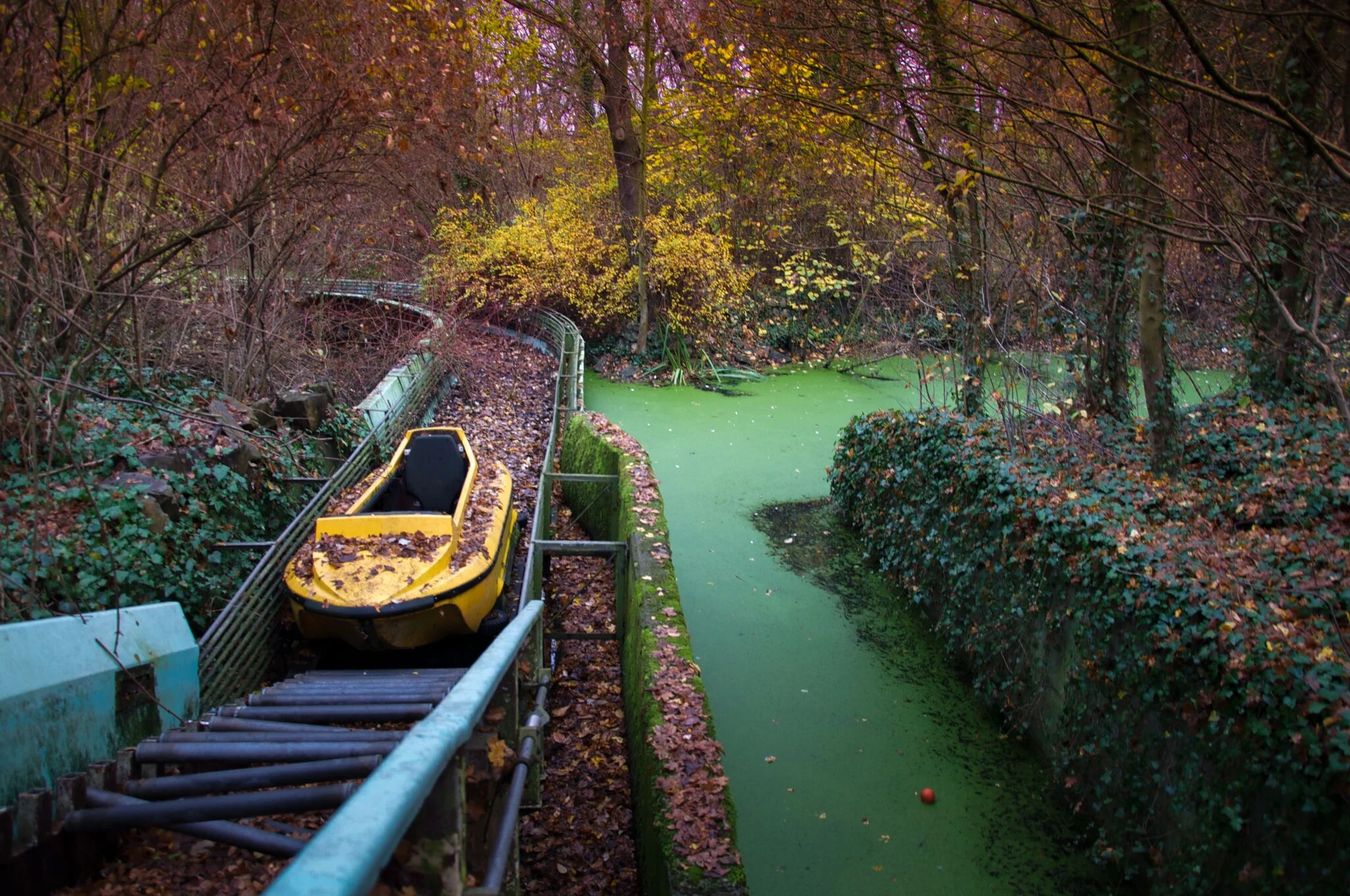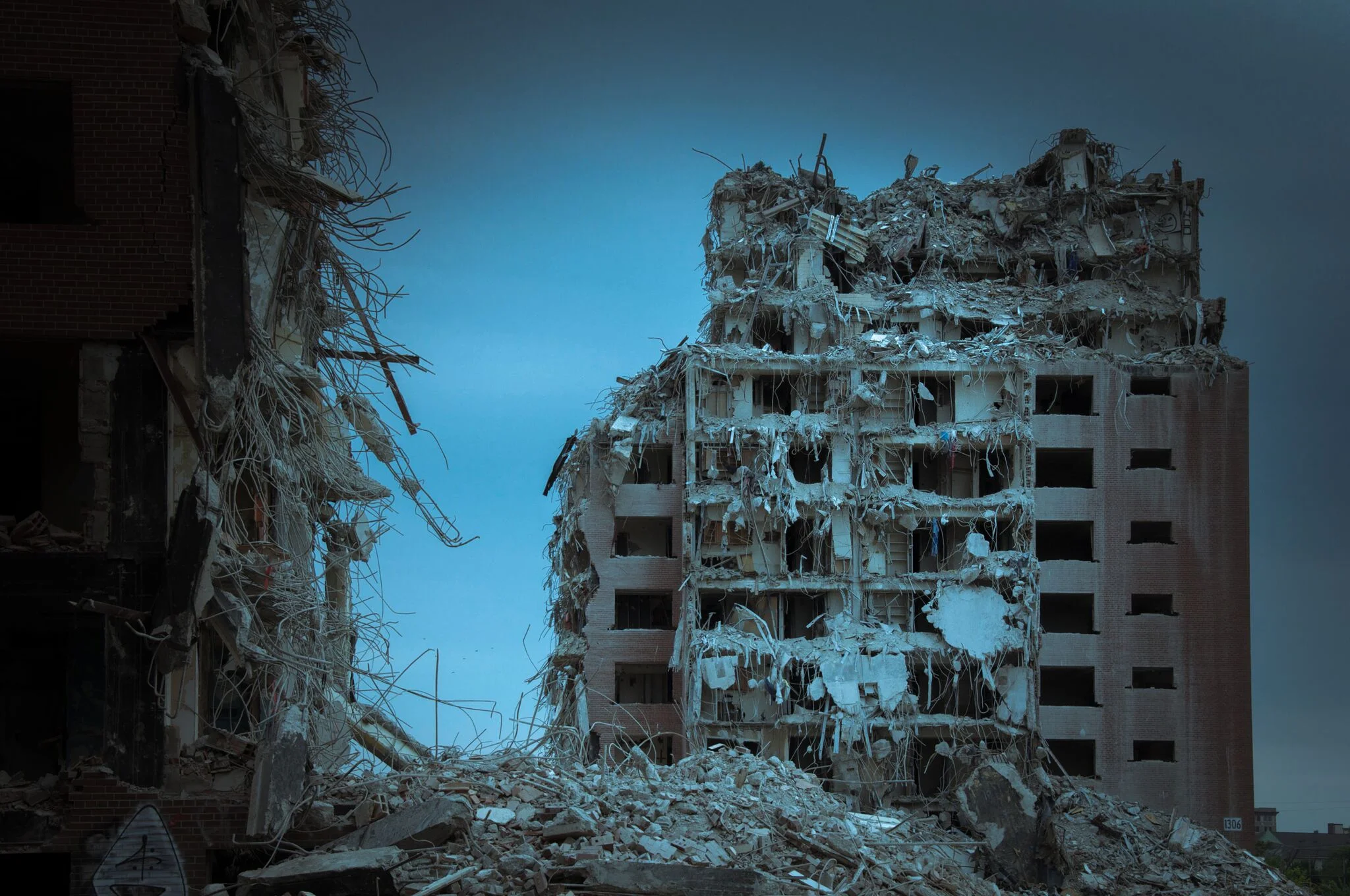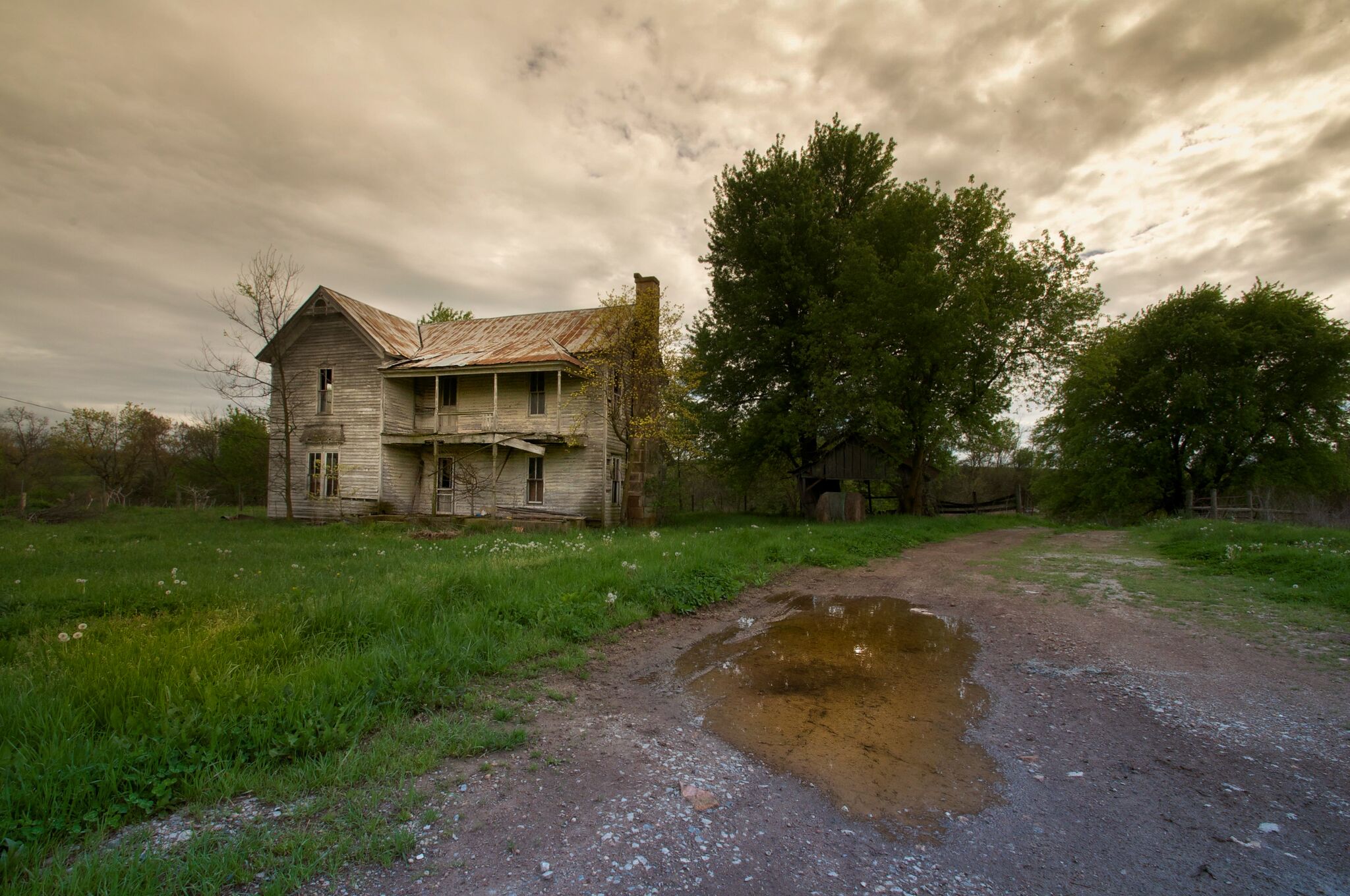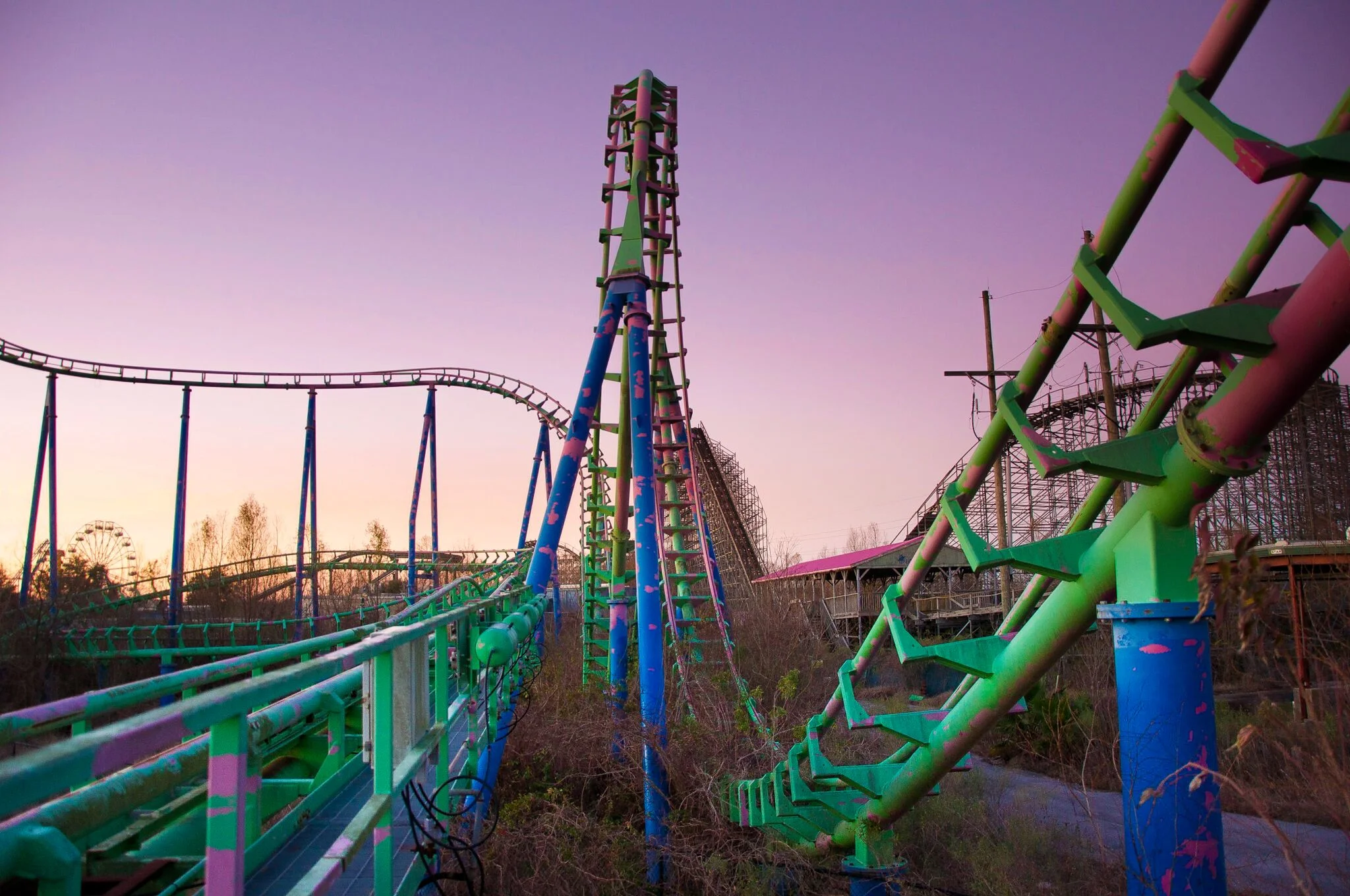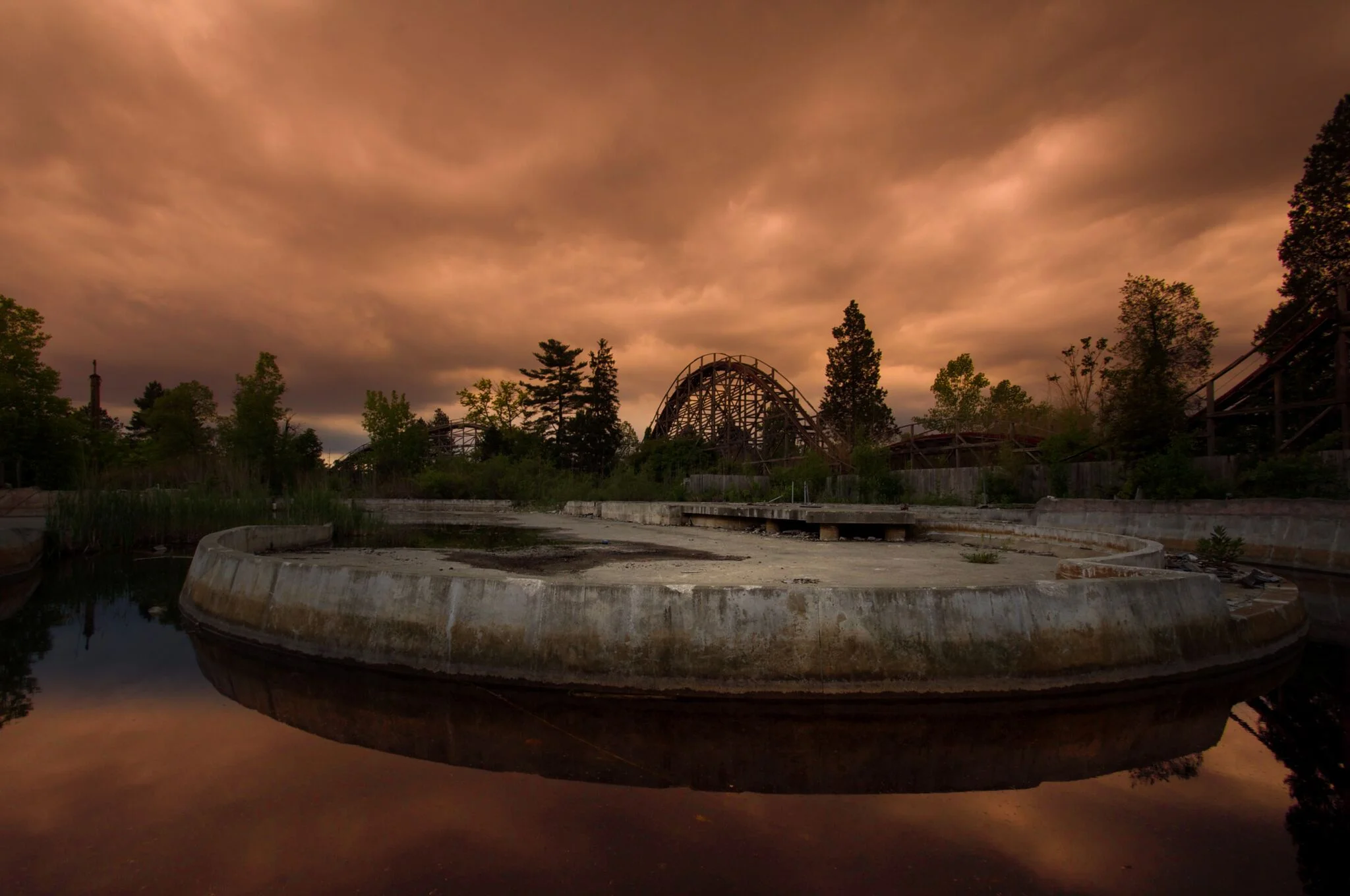"It was very risky": Seph Lawless on His Viral Photos of Abandonment
Seph Lawless
"They never thought in their wildest imaginations that America could ever look like how they were seeing it in my images."
By Cailin Loesch
Seph Lawless is a pseudonymous American-based photographer, artist, author, and photojournalist who is best known for his photography of places long forgotten. A Lawless fan who first discovered his work years ago from a piece that featured his photos of Disney's abandoned River Country, I learned during a Friday afternoon phone call with him that perhaps just as important as Seph's eye for photography is his sense of rebellion. On the phone, Lawless speaks with as much passion about the societal issues that he feels he's unearthed through his work as he does about his photographic technique, and with as much sincerity in warning other photographers to be safe as conviction in describing why he was banned from Disney World for life after jumping a 20-foot fence to get a shot. Listen in as I speak with Lawless about how his unusual love of abandoned places developed, why he feels people are so drawn to his images, and why he hopes people see his work as more than just hauntingly beautiful pictures.
Cailin Loesch: I’m really intrigued by what a unique brand of photography you’ve come to be known for. The first question on my mind is, how did you realize you have this special affinity for abandoned places?
Seph Lawless: For me it started at a pretty young age. I’m from Cleveland, Ohio, part of what’s considered the rust belt region of America. At the time before World War II, in some of the biggest cities in America—Cleveland, Detroit, Gary, Indiana—there were a lot of manufacturing jobs. And then after World War II, we declined significantly, and that had to do with outsourcing of American manufacturing jobs and globalization. So we went from being among the biggest cities in the country before WWII, to after among the smallest, hardest-hit areas. We lost 50% of our population. So, you could imagine, over about three decades or so, losing half your population, that leaves a lot of abandoned schools, abandoned neighborhoods, abandoned hospitals, asylums, stadiums, and factories, of course. And growing up in that, you know, seeing that decline as a child all the way to my adolescence and young adulthood, I started noticing a lot, just gazing out my parent’s car window as we travelled from Cleveland to Detroit, where we had relatives. And you would see that a lot...you would see more and more. And that became a treat of mine at a young age; I thought it was very aesthetically beautiful to look at, very similar to the ancient ruins of Greece. I remember being fascinated by just how it looked. I was young, so I just said, “boy, they look kinda spooky, they look mysterious, I want to know more.” But I didn’t really know much outside of what I was seeing. It was very superficial. It wasn’t until a little later, when I got a little older, in my teenage and early adulthood, where I started going out with like a film camera—back then, there was no digital camera—so I went out with a film camera just to kind of capture those moments for me. And I started going inside of these places and documenting them, and then years went on, and I didn’t start sharing them with people [until] internet came in, and social media. Popular photo sharing platforms like Instagram. And then, when I started sharing those images on social media that I always thought were really important for people to see, it was then when people all over the world started seeing my images and sharing them. They couldn’t believe that this was parts of America, they never thought in their wildest imaginations that America could ever look like how they were seeing it in my images.
CL: That’s kind of what I was wondering, I guess you’re saying that your fascination with these places actually came before your passion for photography.
SL: Oh, absolutely. Yeah, absolutely.
Seph Lawless
CL: Did you know right away, then, that you wanted to make this your trademark as a photographer?
SL: No, it basically happened pretty organically in the sense that I knew what I was seeing...my opinion, my belief was that what I was seeing was very poignant and very important for people to see. I wanted other people, not just Americans to see—I wanted to take my images to a global stage. I wanted people to see what I was seeing, ‘cause I thought it was really important to see. I didn’t know the best way to go about that, but then, I thought the best way would be photography. Sharing the images would be an easy, quick way to connect with the viewer and to reach them. You know, I would have picked another artistic medium if I thought it would work well. Sometimes words aren’t enough. So that’s exactly why I started taking pictures.
CL: Do you feel that your images appeal to a particular personality, or part of a personality? Because I just, I immediately felt drawn to them, and I wonder what it is about them that evokes such a feeling.
SP: Yeah, you know, I think that varies to the particular viewer. I mean, over the years, a lot of people have wrote me—I still to this day get a lot of personal emails saying that, you know, a particular image that they see of mine really speaks to them in such a way. Sometimes they’ll express a loneliness, or it encompasses a feeling that they have—sometimes a joy, and memories and nostalgic memories. But more than ever, I get more of a response from people taking an image and kind of making it their own, and I love that—I think as an artist, that’s kind of the most beautiful thing, right? I mean, if you can create something and people can make it into their own, I think that’s great.
CL: Yeah, ‘cause you know it’s left an impact on them, then.
SL: Yeah! Yeah, and honestly, I knew if I took the images and portrayed the images creatively enough, I knew they could have a very deep impact on the viewer. And that’s essentially what I wanted, I didn’t really care what that emotion was. I wanted to hold the viewer there, even for a brief moment. You know, because my fundamental belief is that it’s the artist’s responsibility to challenge the viewer, to make them feel something. And my hope was to make them feel something to where they would be moved emotionally, and hopefully moved into an activism in a way, to kind of change what they were seeing or to use it to their advantage. So, I always thought that art is that powerful of a thing, that an artist should try to achieve that. So that’s always been my fundamental belief.
Seph Lawless
CL: I actually...I remember first seeing your photos of River Country, the infamous abandoned Disney Park—I think that was the first photos I saw of yours years ago.
SL: Yeah!
CL: I was wondering then, how did you even have access to the inner areas of the park? When I picture you going to these places, I imagine you, like, hopping fences, and ducking under broken doors...I don’t know how accurate that is [laughs]. But how easy is it for you to get to these places?
SL: You know, it’s hard sometimes. And that’s a great example. I mean, those parts are very protected by the Disney Corporation...they shield it with a blacked-out fence twenty feet high. I was able to scale that and get inside…
CL: [laughs]
SL: ...There was security on the outside, so I remember hiding inside the park—I couldn’t come out until the security left. So it was very risky, me going in. Eventually they found out, because the images went viral and I started challenging Disney about why they weren’t cleaning up these areas of the park and why they were trying to hide them to the public. They started going after me pretty heavy. They reached out to me, they banned me from entering Disney World for life, but they refused to answer any questions that journalists had raised...like, I had challenged Disney in interviews to BBC News, and others reached out, and to this day, they never got a response. Disney Corporation is a very powerful company. I just thought they could have done something more with that land; they could have at least cleaned it up, made it into a nature reserve. They could have done something with that land. I mean, this is sitting there rotting for for over 20,30,40+ years...these are two separate abandoned parts of Disney. And it’s sitting within feet of luxurious Disney resorts, within feet of tourists that are walking by. It’s kind of hidden in plain sight. So to me, I just thought it was almost irresponsible of Disney to do that. So, yeah, I just...to this day I think a lot of people are just a little confused by their decision not to do anything or to address the situation at all. They wouldn’t even speak to the media when we reached out to them.
A waterslide at Disney's abandoned River Country park, Seph Lawless
CL: I wonder why! That’s strange. But as you said, that really is activism, then, that you’re using.
SL: Yeah! Well, trying to raise social awareness. But when you don’t get the response that you want, you wonder, you know...people start the whole Disney conspiracy thing, right? That’s how conspiracies are formed! [laughs] You don’t really know, and you go, ‘boy’... they leave people guessing. Then all sorts of people think that, you know, Walt Disney’s body might be buried out on Discovery Island or something. So you hear all these lavish things, but you can’t back them; there’s no facts. But it makes you wonder why. Clearly they’re a million dollar company, clearly they can clean up their mess, but they choose not to. And that’s an interesting stance for a company to have, especially when you have this real journalist, this Seph Lawless, actually exposing your dirty laundry that actually goes viral [laughs]. And everyone is looking at it. It’s an odd position Disney Corporation would take.
CL: But I guess that’s what makes your photography so interesting, because the photos that you took of the abandoned River Country...that is the complete opposite of what we think of Disney. We think of shiny parks, kids having fun and laughing … you show these places in just a completely different way than how we’re used to seeing them when they’re up and running.
River Country, Seph Lawless
SL: Absolutely. And that’s the whole goal behind my images. Early on, I wanted to show the world, other countries, a different side of America—a weak and a vulnerable side. I think people look at America, and we look at the skyscrapers and New York City, and we think America is great. And we are a great country—I love my country to death, I really do. But hiding in the shadows is crumbling areas of my country that I want people to not forget about, too. I want people to talk about these areas as well, not just focus on the good. And so when I see people not only in my country, but abroad, who look at my country and only look at the good and talk about the good, I thought it was my responsibility to show a more accurate depiction of America, and show the other side, too. Just like the other side of Disney World, the Happiest Place on Earth? I want to show you the place that almost looks like the Unhappiest Place on Earth. So there is that interesting thing, and I’ve been attacked early on from people who say, “Oh, you’re anti-American. Why would you want to show your country as vulnerable and weak?” Well, I want to show it because it’s true. It’s accurate. You know, and I think in the long-term, only good can come from knowing the truth. And when you go into these places in America, oftentimes there’s still people living amongst the ruins. They’re some of the most poor and disenfranchised Americans in the entire country. So when you ignore these parts, you’re ignoring their feelings, their emotions...I thought that was a horrible thing for my country to do. So I wanted to showcase that. I want people to start looking at these areas and take away what they will from it.
CL: I can hear the passion that you have for this in your voice—just your desire to really show people these things through your work...is your rebellious nature what inspired your pseudonym, Seph “Lawless”?
SL: Yeah, I think for the most part...I mean it started off very social media-driven, like I said. I went from this transition from shooting film, just being this regular kid out there exploring—I would explore in the woods, and I started to explore abandoned buildings. But as I went into this social-media driven world, I think a lot of us are known through our handles that we use on social media...maybe some of us use our middle name, or a first name and then a funny name after or something...mine’s very similar to that. It started off very innocently. But then it also helped me to effectively trespass into these areas. If I used my real name, and people saw my real name in the press, then, if I got pulled over or if I was in an abandoned building and was found by a security officer, they would recognize me in the news and I wouldn’t get a warning. I would be arrested right away. This kind of let me stay a little bit more under the radar. Years have passed since then, of course, and now it’s branded into a essentially a pen name, no different than J.K. Rowling or Stephen King. That’s not their real names, either. So that’s pretty much how it started and how it ended.
Seph Lawless
CL: So, many of your most popular photos were taken right in your home state...how do you find out about these abandoned places? I’m especially wondering how you find locations that haven’t been photographed before. ‘Cause you seem...it’s almost like you have a radar for it! I mean, I live in Pennsylvania, and the most I’ve found is an abandoned train here and there, and you just seem to find these places left and right. How do you do that?
SL: Right. Yeah, it takes a lot of time. A lot of people now say, “Oh, just Google some!” Well, if you look, and you Google, a lot of stuff will pull up my name [laughs]. I actually put a lot of things on Google for people to do. But how I got it, was years ago, pretty much exploring and talking to people. So as I travelled around, I started running into people, and people would tell me by word-of-mouth. I’ll give a perfect example. I was down in North Carolina, and I was documenting this remote, abandoned amusement park, this Wizard of Oz-themed amusement park. It sits on the top of a mountain, and it’s so hard to get to. So I’m in this rural section of North Carolina, and I had the guy working at the hotel who knew what I was doing and recognized my stuff, and we got to talking and he said, “Hey, you know, about five miles away there’s this abandoned Nascar racetrack.” And I said, “Oh boy, that sounds cool! I’ve never even heard of that.” So I went down there, I photographed that, that went viral, they put that on a TV show, too. But before I was there, no one knew about it! I wouldn’t have known about it unless I was travelling and taking the time to meet people. That’s how I get a lot of it. Having grown up in Ohio, I couldn’t help but miss it. I mean, I grew up around it; everywhere I looked, there would be an abandoned factory. So I believe that anybody reading this article or listening to me right now...if you grew up in the 80s in Cleveland or Detroit, you couldn’t take a selfie without an abandoned factory behind you if you were outside. I couldn’t go to school without passing abandoned homes or abandoned schools. You couldn’t go to and from work without seeing something abandoned. And the land was generally flat, so we didn’t have hills towering as a backdrop. All you had was apocalyptic landscape, this theatrical landscape just around you any given time that you look. So it was very easy, growing up, it was abandoned ruins all around me.
CL: I know you mentioned that you don’t want your photography to gloss over anything, that you really do want to make it like, “this is how it is, you know, this isn’t pretty, this isn’t nice, this is the reality of some parts of America,” but do you ever feel like there is a part of you that gets a sort of feeling that you’re bringing these things and places that are clearly long forgotten back to life through your photography? That at least now people are seeing it again?
Seph Lawless
SL: Yeah, you know, I think that early on, I don’t think that ever really crossed my mind...it did later, especially in the last couple of weeks alone. I was reached out by Washington, DC—the government, you know, the country—they archive photographs to kind of put in a time capsule, if you will. So they kind of stay in the national archives. And they’re gonna be using my images, so centuries from now, years from now, 50 years from now, 500 years from now, people will look back and see some of these places that once existed that are no longer there. So, to me, that’s a really important part of American history, right?
CL: Right.
SL: These images are going to be in our national archives, which is a huge honor, by the way. When they reached out and wanted to do that, I said, “Hey, sure.” But, yeah, I agree, I do want people to remember these places, and if you take some good from that, and if you find some beauty in it, sometimes I let you see the places and let them look and appear beautiful, too. So it really all depends on how I portray the images, but also there’s always been a very consistent theme to my work, and that’s raising awareness for what I believe are very important issues [in my country].
CL: You mentioned how you portray these places through your photography; is there any particular photographic technique that you use when shoot, let’s say, an abandoned building? Like a certain light or angle, something that you feel conveys the loneliness of something forgotten?
Seph Lawless
SL: Oh, absolutely! You hit the nail on the head when you said “loneliness.” There’s a way I do it shooting wide angle, so I let you see the vast, large areas abandoned. So I really like to shoot wide angle. If I’m shooting a particular house—let’s say, there’s an abandoned house or an abandoned structure—if you emphasize that loneliness and feel, that shot is going to be taken in such a way that you’re not going to see that house right next to it, or 20 feet away from it. That isn’t organic, right?
CL: Right, right.
SL: I frame it in such a way. So at this point we’re not even in the editorial process, this is just framing it right. The lighting has to be right...so I do a lot of that exacerbating that feeling of loneliness, that feeling of dread in some cases. That’s how I frame a shot. And of course, in the editorial process, you have a lot more creative insight to do. And if someone hires you...I’m hired to do a lot of photojournalism now...you know, I’m doing a story right now for the New York Post...If I get hired for that, you really can’t manipulate the images as much at all. I mean, you could use simple corrections, simple saturation, and you know, tones, and brightness, but you really can’t do anything else. And I don’t over-photoshop my images, I really don’t like to do that so much. But I always underexpose my shots somewhat during the editing process. I think you can eliminate the more rich tones through that.
CL: Do you believe in ghosts or spirits? I wonder because sometimes when I see your photos, my mind immediately looks for an unusual light, or an orb, or some sign that something supernatural is there.
SL: I’m not a strong believer in the paranormal but I believe there are things that science just can’t quite explain yet.
Seph Lawless
CL: That's interesting. I think I agree with you. So...last question for you, Seph. Looking at your photos inspires me, and I’m sure many others, to just grab a camera and a flashlight and head out exploring. What’s your advice for making the best of it?
SL: Yeah, you know, I think it’s great to do. You just have to be careful, be mindful of your surroundings. Everyone now has a great camera on their cell phone, and a flashlight. These places that they see in my images look exciting, and interesting, and they want to go out and explore, but the thing that they have to really understand is the dangers, right? I mean there’s dangers to their health from asbestos in a lot of the areas that they see in my images, asbestos that can kill you within 20 or 30 years. I’ve been in abandoned structures where right in front of me, part of the ceiling falls down on me, could have crushed me to death. I’ve fallen through floors, and caught myself waist-deep and had to pull myself up. I was in an abandoned mansion in Pennsylvania, actually, outside of Pittsburgh...I felt like it was caving in on me and kept sinking through the floors, and about a week later I got back and that mansion had collapsed down to the ground. It would have killed me. So, I mean, there are dangers as well. A lot of these places have criminals, derelicts, and this is their home. So you’ve gotta be really mindful. It’s not always where you go in, and you’re gonna be alone. There’s times when I go into a dark place and I’m photographing, and I think I’m completely alone, and then I get home and light the image, and I see someone watching me in the distance, who I didn’t even know what there. There was someone quietly watching me in there. There’s always dangers involved. So I think once you know those dangers, you can protect yourself a little better. Just be safe out there, I guess.




